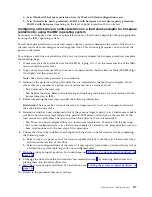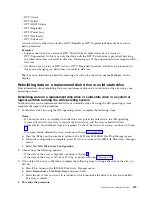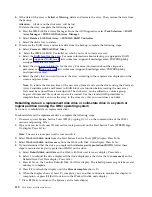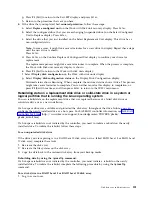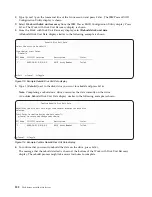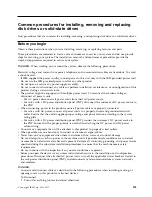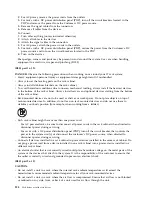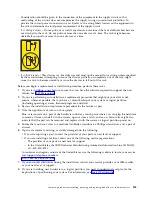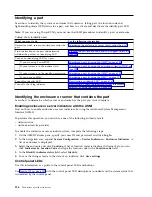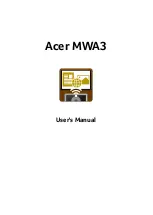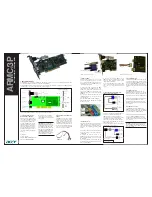
v
Yes
: Continue with step 5.
v
No
: Continue with step 6.
5.
The mainstream SSD reached the limit for the number of write operations that are supported. Write
operations to the SSD become slower over time, and at some point the SSD becomes a read-only
drive. When the operating system writes to the read-only drive, the write operations are rejected, and
the operating system considers the drive as if a failure occurred. For example, if the operating system
writes to a drive that is in a RAID array and if the write operations are rejected, the array becomes
exposed. To support normal write operations, the drive must be replaced.
Replacement of the mainstream SSD might not be covered by the system's level of service entitlement,
depending on the terms and conditions of the system. For more information about mainstream SSDs,
see “Mainstream solid-state drives” on page 108. This ends the procedure.
6.
The mainstream SSD is nearing the limit for the number of write operations that are supported. No
service action is required at this time.
Note:
After the mainstream SSD reaches the limit for the number of write operations that are
supported, write operations to the SSD become slower over time, and at some point the SSD becomes
a read-only drive. To support normal write operations, the drive must be replaced. Replacement of the
mainstream SSD might not be covered by the system's level of service entitlement, depending on the
terms and conditions of the system. For more information about mainstream SSDs, see “Mainstream
solid-state drives” on page 108. This ends the procedure.
Using the IBM i fuel gauge tool
Learn how to use the IBM i operating system fuel gauge tool to find the amount of remaining life in a
mainstream solid-state drive (SSD).
To use the fuel gauge tool for the IBM i operating system, complete the following steps:
1.
If the system has logical partitions, complete this procedure from the logical partition that owns the
SSD.
2.
Sign on to an IBM i session with the QSECOFR user profile.
3.
To create a report in a spoolfile, type the following command at the XPF command line and press
Enter.
CALL PGM(QSMGSSTD) PARM(’SSDGAUGE’ X’00000008’ ’SSTD0100’ X’00000000’)
4.
Display the contents of the spool file. The spool file contains a report for mainstream SSDs. For each
of the SSDs in the report, continue with the next step.
5.
Is the value in the Life Remaining Gauge field less than or equal to 2 percent?
v
Yes
: Continue with the next step.
v
No
: The mainstream SSD is not reporting a change in status for the number of write operations
available.
6.
Is the value in the Life Remaining Gauge field 0 percent?
v
Yes
: Continue with the next step.
v
No
: Continue with step 8.
7.
The mainstream SSD reached the limit for the number of write operations that are supported. Write
operations to the SSD become slower over time, and at some point the SSD becomes a read-only
drive. When the operating system writes to the read-only drive, the write operations are rejected, and
the operating system considers the drive as if a failure occurred. For example, if the operating system
writes to a drive that is in a RAID array and if the write operations are rejected, the array becomes
exposed. To support normal write operations, the drive must be replaced.
Replacement of the mainstream SSD might not be covered by the system's level of service entitlement,
depending on the terms and conditions of the system. For more information about mainstream SSDs,
see “Mainstream solid-state drives” on page 108. This ends the procedure.
8.
The mainstream SSD is nearing the limit for the number of write operations that are supported. No
service action is required at this time.
Disk drives or solid-state drives
111
Summary of Contents for Power System 5148-21L
Page 2: ......
Page 18: ...xvi Disk drives or solid state drives ...
Page 202: ...184 Disk drives or solid state drives ...
Page 203: ......
Page 204: ...IBM ...





















